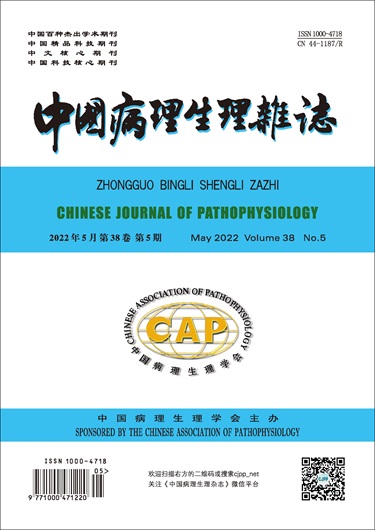烟曲霉提取物对人支气管上皮细胞Muc5ac表达的影响
引用次数: 0
摘要
目的:探讨烟曲霉提取物(Aspergillus fumigatus extract, AFE)对人支气管上皮细胞Muc5ac表达的影响及其可能机制。方法:体外培养人支气管上皮细胞(16HBE-14o),分别于不同浓度的AFE(0、8、16、20 mg/L)作用不同时间。为了探索其作用机制,我们使用了热处理的AFE、丝氨酸蛋白酶抑制剂(抑肽酶)和蛋白酶激活受体-2 (PAR-2)拮抗剂(FSLLRY-NH2)。采用免疫组织化学和酶联免疫吸附法检测Muc5ac在不同时间间隔的产生和释放。RT-PCR检测Muc5ac mRNA的表达。结果:正常对照组仅检出少量Muc5ac。在AFE暴露的实验组中,细胞产生的Muc5ac比正常对照组多(P0.01),这与暴露时间或AFE浓度呈正相关。抑肽蛋白和PAR-2拮抗剂(FSLLRY-NH2)抑制AFE对16HBE-14o产生Muc5ac的影响。热处理后的AFE失去了蛋白酶活性,但对Muc5ac的产生和mRNA的表达没有影响。结论:AFE通过其蛋白酶活性激活PAR-2,使气道上皮细胞产生和释放更多Muc5ac,可能参与哮喘恶化。本文章由计算机程序翻译,如有差异,请以英文原文为准。
Effects of Aspergillus fumigatus extract on expression of Muc5ac in human bronchial epithelial cells
AIM:To investigate the effects of Aspergillus fumigatus extract (AFE) on the expressions of Muc5ac in human bronchial epithelial cells and its possible mechanism. METHODS: Human bronchial epithelial cells (16HBE-14o) were cultured in vitro, which were exposed to different concentrations of AFE (0, 8, 16, 20 mg/L) for different times. In order to explore the mechanisms, heat-treated AFE, serine protease inhibitors (aprotinin) and protease-activated receptor-2 (PAR-2) antagonist (FSLLRY-NH2) were used. The production and release of Muc5ac in different intervals were tested by immunohistochemistry and ELISA. The expression of Muc5ac mRNA was measured by RT-PCR. RESULTS: In normal control group, only a few Muc5ac was detected. In the experimental groups with AFE exposure, cells produced more Muc5ac compared to normal control group (P0.01), which were positively related to the exposure time or the concentration of AFE. Aprotinin and PAR-2 antagonist (FSLLRY-NH2) inhibited the effect of AFE on Muc5ac production by 16HBE-14o. Heat-treated AFE, which lost protease activities, exerted no effect on Muc5ac production and mRNA expression. CONCLUSION: AFE, depending on its protease activity, activates PAR-2 and causes airway epithelial cells to produce and release more Muc5ac, which may contribute to deterioration of asthma.
求助全文
通过发布文献求助,成功后即可免费获取论文全文。
去求助
来源期刊
CiteScore
0.80
自引率
0.00%
发文量
16309
期刊介绍:
Chinese Journal of Pathophysiology is the only comprehensive advanced academic journal of pathophysiology in China, which is supervised by China Association for Science and Technology, sponsored by Chinese Pathophysiology Society and hosted by Jinan University. Journal of pathophysiology research (including experimental research and clinical research), thematic reviews, experimental technology innovation and improvement, focusing on the introduction of disease pathogenesis.
The current Chinese Journal of Science Pathophysiology has been included in the core Database of China Science Citation Database (CSCD), CNKI, Wanfang, Vipp, Superstar, Scopus, EBSCO, Chemical Abstracting (CA), JST, WHO Western Pacific Regional Medical Index (W PRIM) and other databases included.

 求助内容:
求助内容: 应助结果提醒方式:
应助结果提醒方式:


